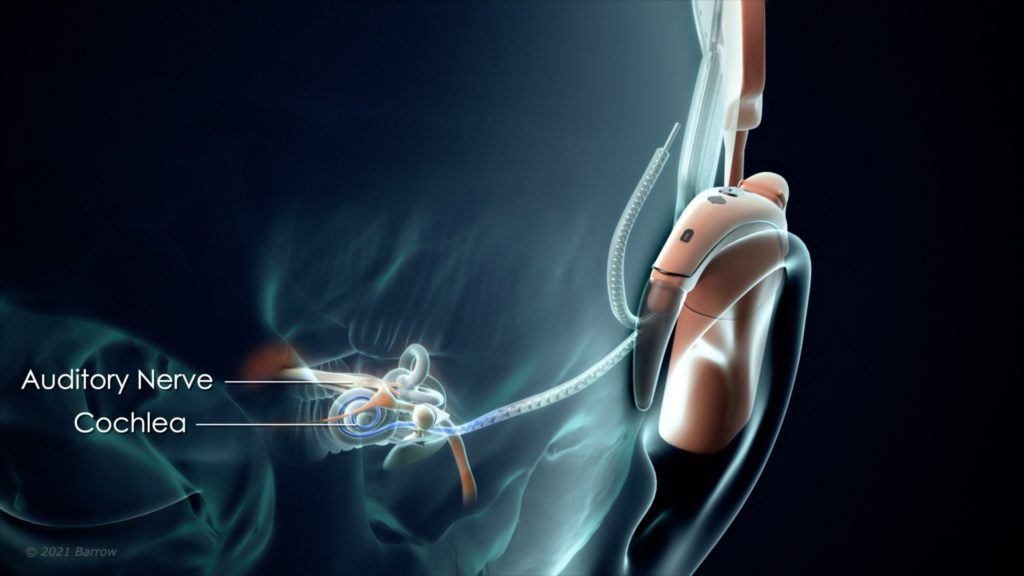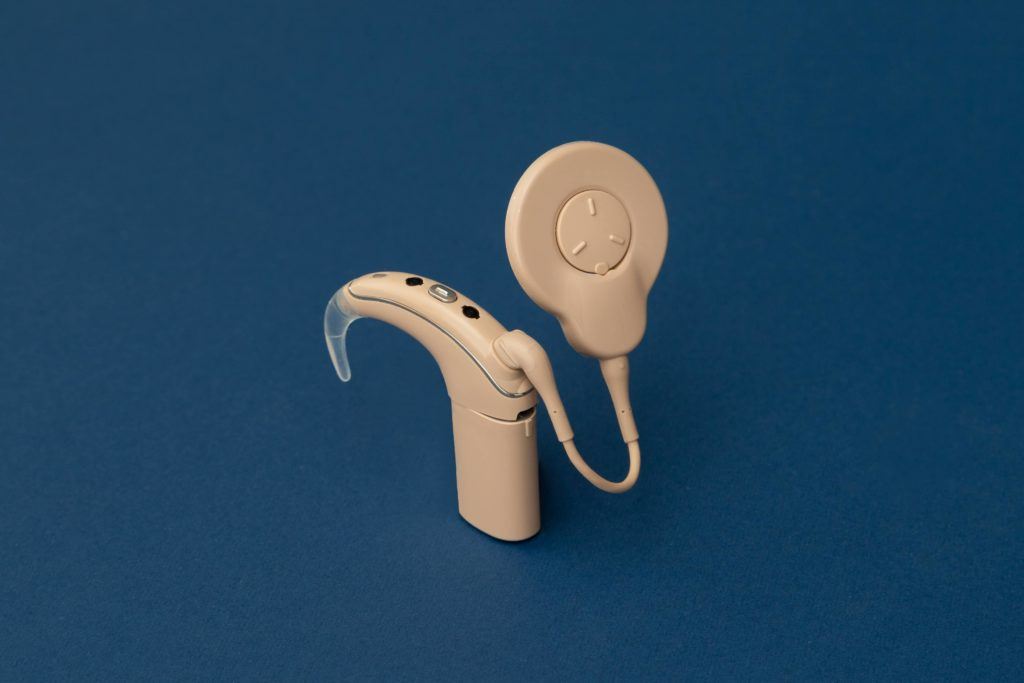
Cochlear Implant
What is a cochlear implant?
A cochlear implant is a highly advanced device designed to help restore some parts of sensorineural hearing loss. This type of hearing loss originates from the inner ear or the auditory nerve, which sends sound signals from the inner ear to the brain.

What is the cochlea?
The cochlea is a snail-shell-shaped organ, located just inside the eardrum area and encased in the bone surrounding the middle/inner ear, known as the temporal bone. It is capable of transforming sound waves/energy into electrical signals which the brain can interpret.

What is a cochlear implant used for?
For patients with sensorineural hearing losses, a cochlear implant may be able to restore some hearing sensation and thus the ability to interact with the world around them again.
For infants and small children with this type of hearing loss, a cochlear implant may allow them to hear their world for the first time and even develop spoken language ability where this might not have been possible otherwise.
How does the cochlea allow us to hear sounds?
The spiral shape of the cochlea is an efficient design, with sound energy entering one small area (the stapes/oval window), transmitting through fluid-filled compartments of the cochlea, and exiting through another small area (the round window). As sound waves travel through the cochlear fluids, they cause tiny internal membranes to “ripple.” These ripples activate specialized nerve endings at various points along the length of the snail shell. Each point that is activated represents a different pitch, or frequency, that we can sense in our hearing spectrum.
The culmination of these signals then travels up the nerve endings to the center of the snail shell, an area called the modiolus. There, they come together to form the cochlear-vestibular nerve, also known as the auditory nerve or cranial nerve VIII. This nerve then carries the electrical hearing signals to our brain, where they are interpreted and processed as sounds we can recognize and to which we can react.
Additional Information
What is sensorineural hearing loss?
The most common forms of severe human hearing loss occur in the cochlea. These are broadly known as sensorineural hearing losses. Oftentimes, the auditory nerve and upper pathways in the brain are normal and spared from damage or dysfunction. Sensorineural hearing loss can occur, via different mechanisms, in all people ranging from infants (congenital sensorineural hearing loss) to elderly adults (presbycusis).
For those who have moderate to severe hearing loss in one or both ears, this can be an extremely trying and debilitating condition. Hearing is vital for us as humans to properly utilize speech-language, interact with family and loved ones, sense the world around us, and be alerted to trouble or danger in our vicinity.
How do cochlear implants improve hearing loss?
These surgically placed devices work by electrically stimulating the dysfunctional cochlear portion of the cochlea-vestibular nerve and its nerve endings within the modiolus (center of the snail shell). As this signal reaches the healthier upper portions of the nerve and transitions to the brain, the upper hearing pathways can be “turned back on” and patients can again utilize their hearing senses.
Cochlear implants have been available to us for over 60 years. Since then, they have undergone incredible evolutions in their designs, computing, sound processing, and aesthetics. While technology still limits the ability of a cochlear implant to produce fully “normal” sound sensation, properly selected recipients of a cochlear implant can achieve remarkable leaps in their hearing function, speech-language capabilities, and environmental awareness. Some patients report improved music appreciation.

What can I expect if I receive a cochlear implant at Barrow?
Our team of world-class cochlear implant specialists here at Barrow, comprised of both surgeons and audiologists, can help determine if a cochlear implant is an option for treating your hearing loss. If you are a candidate for a cochlear implant, your surgeon will counsel you further on how the implant will work for you and custom select a device that best meets your needs.
Cochlear implant surgery is typically less than an hour long and performed on an outpatient basis, depending on your overall health. Receiving the implant marks the beginning of your hearing health recovery. After surgery, our audiologists can help train your brain on how to hear using this remarkable device. This process, typically lasting three to 12 months, signifies the journey to functional hearing restoration.
I am or might be a candidate for a cochlear implant. How do I get started?
If you have been told you are a candidate for a cochlear implant, or you think you have a degree of hearing loss that may benefit from this technology, please contact our ENT department. We will promptly schedule you for a consultation with our neurotologist and audiology team.
Videos












